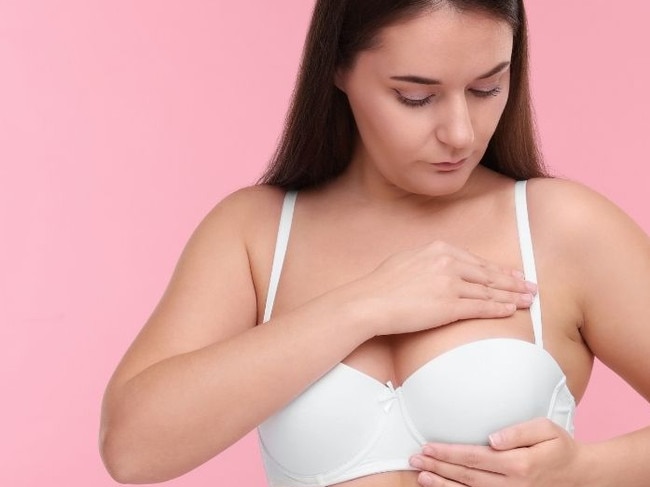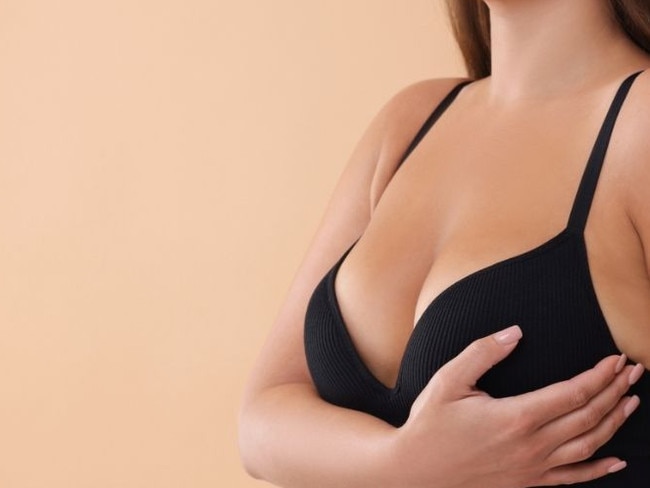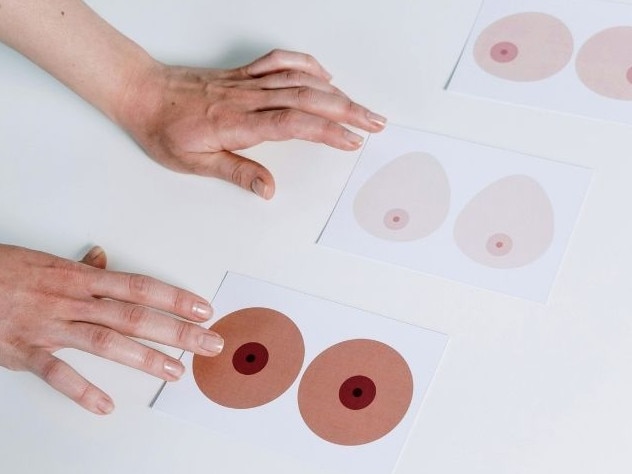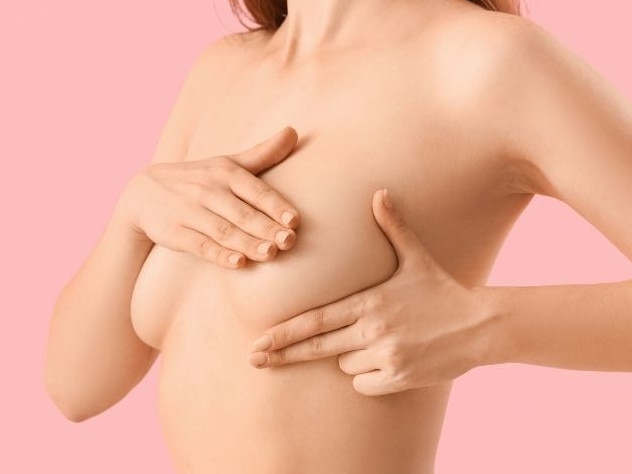How breast tissue density affects your risk of cancer
Breast tissue falls into one of four categories and the type you have affects your risk of cancer. These are eight things you should know.

Cancer
Don't miss out on the headlines from Cancer. Followed categories will be added to My News.
Breast cancer remains the most common cancer for women in the UK with about 56,400 new cases diagnosed each year. Age, lifestyle, hormone levels and some medical conditions are known risk factors for the disease, but density of breast tissue is one that typically goes under the radar.
According to Cancer Research UK, “breast cancer risk is higher in women with the most dense breast tissue compared to less dense tissue”.
Yet the results of a recent survey commissioned by the UK healthcare provider GenesisCare reveal that 93 per cent of respondents were not aware of these associated risks.
In the US the Food and Drug Administration recently ruled that all women who undergo a mammogram should be informed about their breast density when they get their results. Although the information is available here, it is not routinely provided, and 92 per cent of British women who took part in the recent survey said they were unaware of the density of their breast tissue.

“It’s harder to spot early signs of cancer in dense breasts using a standard mammogram,” says Harleen Deol, a consultant oncoplastic breast surgeon and specialist adviser at GenesisCare, adding that women with dense tissue may need additional, more sensitive screening methods.
Joanna Franks, a consultant breast and oncoplastic surgeon at University College Hospital and the HCA Wellington Hospital, London, says that a clearer understanding about breast tissue plays an important role in early detection of breast cancer.
“We know that breast density is an independent risk factor for breast cancer,” she says.
“But it is one of many risk factors that need to be considered as part of an overall picture.”
WHAT YOU NEED TO KNOW
What is dense breast tissue?
Breasts are made up of both fatty and glandular or connective tissue.
According to Cancer Research UK, women with dense breast tissue have less fat and more breast cells and connective tissue.
“Glandular breast tissue includes the ducts that transport milk, nodules that make milk, and some fibrous supporting structures,” Franks says.

“The higher the proportion of glandular tissue, the more dense your breast tissue.”
Dense breast tissue is common – a study in the US Journal of the National Cancer Institute found it in approximately 43 per cent of women over the age of 40. On a mammogram, it appears white or grey and fatty tissue appears dark.
How do I know if I have dense breast tissue?
Density isn’t related to your breast size, shape or firmness.
“It is not something that you can see or feel for yourself,” Franks says.
“It is a measure of the tissue in your breasts, and the only way to detect it is with a mammogram or other form of screening.”

Is there a scale of tissue density?
Breast density is an umbrella term, and breast tissue falls into one of four categories. If your breast tissue is very fatty you will have a scoring of A; if it is predominantly fatty scattered with areas of fibroglandular density, you will score B.
Breasts are classified as “dense” if they fall into the C or D categories.

“When you score C it means that your breast tissue is evenly dense,” Franks says.
“And D means lots of breast tissue with very little fat around it, so that it’s extremely dense.”
Why is dense tissue a risk factor for breast cancer?
The denser your breast tissue, the higher your risk of breast cancer. On a mammogram, dense breast tissue appears the same shade of white as lesions or tumours.
“There is evidence that dense breasts increase cancer risk for this reason,” says Maxine Lenza, the health information manager for Cancer Research UK.
“It is much harder to spot a tumour as they are the same colour as the dense tissue.”
Even so, women with dense breasts shouldn’t panic. A 2015 study of 365,000 women age 40 to 74 in the Annals of Internal Medicine showed that not all women with dense breasts are at a higher risk of breast cancer than other women. Only when other risk factors, such as age, ethnicity and family history of breast cancer, were added to the equation did tissue density correlate with increased risk of breast cancer after a clear mammogram result.
Should I be screened more often if I have dense tissue?
The level of density matters when it comes to determining your overall risk for breast cancer. “Mammogram technology has come on a lot in recent years and is now fully digital, which allows us to zoom in for detail more than we could previously, even on a regular 2D mammogram such as those used in screening programmes,” Franks says. “If you have slightly denser breasts or a B score you might be referred for breast tomosynthesis, a 3D mammogram which allows us to take more pictures of more sections to see more lesions.”

Women with a C or D breast density score may be offered a contrast-enhanced subtraction mammogram (CESM) or an abbreviated breast MRI, also known as a Fast MRI, which takes less than eight minutes. “Pick-up rates are higher with contrast tests in people with dense breast tissue,” Franks says. “For very dense breast tissue, a regular 2D mammogram on its own is less reliable.”
Ultrasound is sometimes offered in addition as it can help to improve the detection rate. “These additional screening tests are available privately and on the NHS for women who are identified as needing them,” Franks says. If you have a genetic predisposition to breast cancer, such as the BRCA gene, your lifetime risk of developing breast cancer is high enough for you to be screened at an earlier age. “If you are at high risk, you may be screened with an MRI scan annually in your twenties and thirties,” Franks says. “And you will have a mammogram added once you reach 40.”
Does age affect breast tissue?
“When you are younger, your breast tissue is usually denser,” Lenza says. Because of this, along with the fact that breast cancer risk is relatively low and the chances of detecting it with screening are not very high, mammograms are not offered routinely until the age of 50.
“Breast tissue density typically decreases as you age,” Lenza says, although every woman is different. One 2022 study of women over 50 in the International Journal of Cancer showed that the 33 per cent of women with low breast density had a 6.2 per cent risk of breast cancer, whereas the 5 per cent with the highest tissue density had a 14.7 per cent risk of the disease.
Tissue density can vary between breasts as we age, and a 2023 study in JAMA Oncology found that detection of a slower rate of breast density decline in one breast often precedes a cancer diagnosis in that breast.

Do diet and hormones influence breast tissue?
Mostly the density of breast tissue is out of our control. It is not determined by diet, exercise or other lifestyle habits. “If you are very, very slim or underweight, then you may have so little body fat that it reduces the fatty tissue in your breasts,” Franks says. “You might end up with more dense breasts and should speak to your GP if concerned.” Otherwise breast density is not related to body shape.
Some types of HRT can influence breast density, as identified in a 2020 study at University College Copenhagen, and that makes it harder for mammograms to detect cancer. “Whether or not to take HRT is very nuanced and every woman needs to be taken as an individual,” Franks says. “The symptoms of the menopause can be very debilitating and doctors might advise some women with a raised family and personal risk of breast cancer who do take HRT to have interim screening in addition to their regular mammogram.”
If I do get a call-back, is it going to be bad news?
Not necessarily. It is often down to something simple – the screening might not have quite captured what oncologists need to see or the image could be blurred. Or your breast density may have increased a bit, requiring a 3D mammogram in addition to the 2D test.
“If I see 20 women referred to my breast clinic, I know that I am going to send 19 of them home with good news,” Franks says. “Just because you are called back does not mean it is a bad news story, but it does mean we have looked at things in great detail.” The worst thing you can do is ignore an appointment.
Originally published as How breast tissue density affects your risk of cancer


